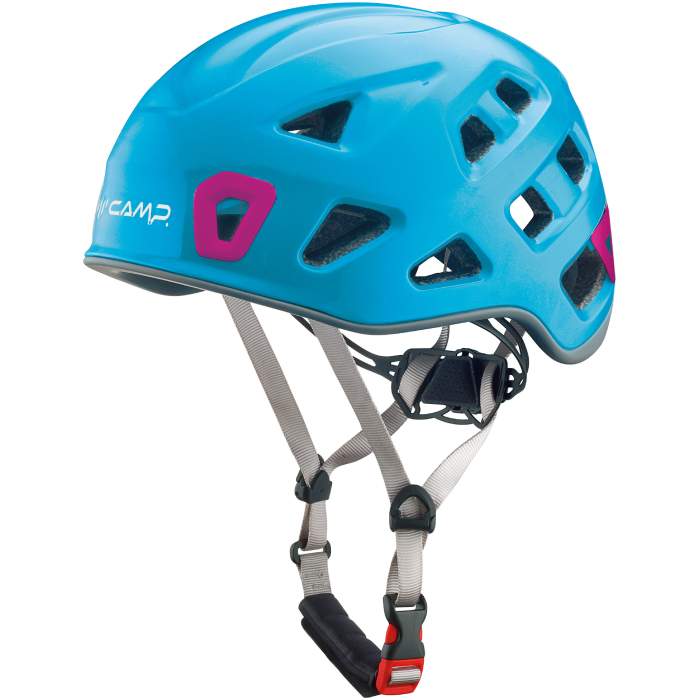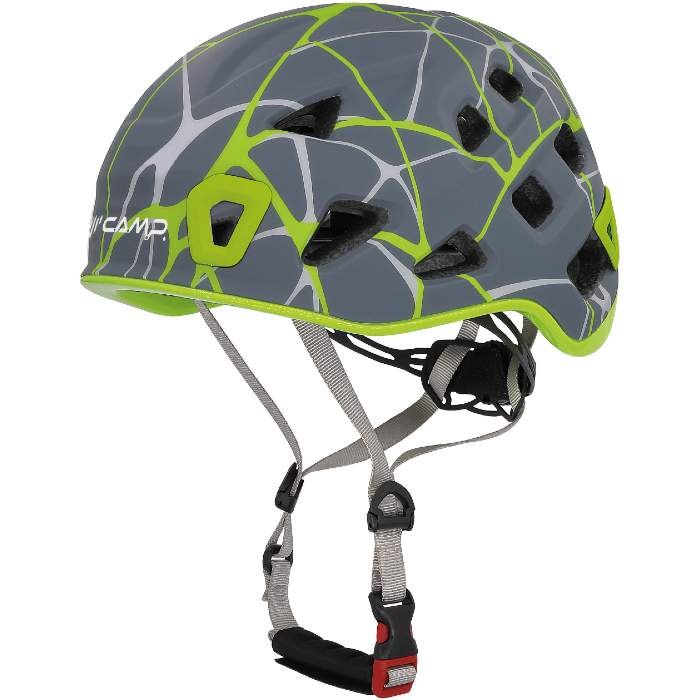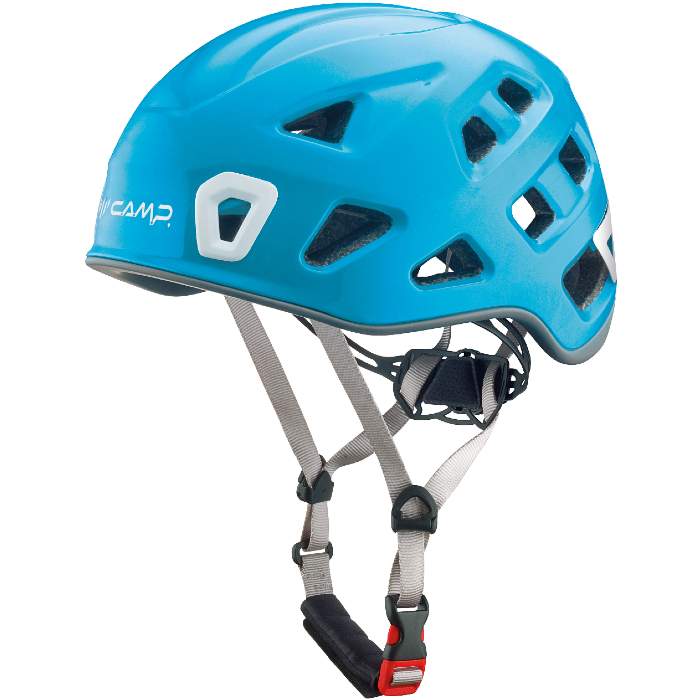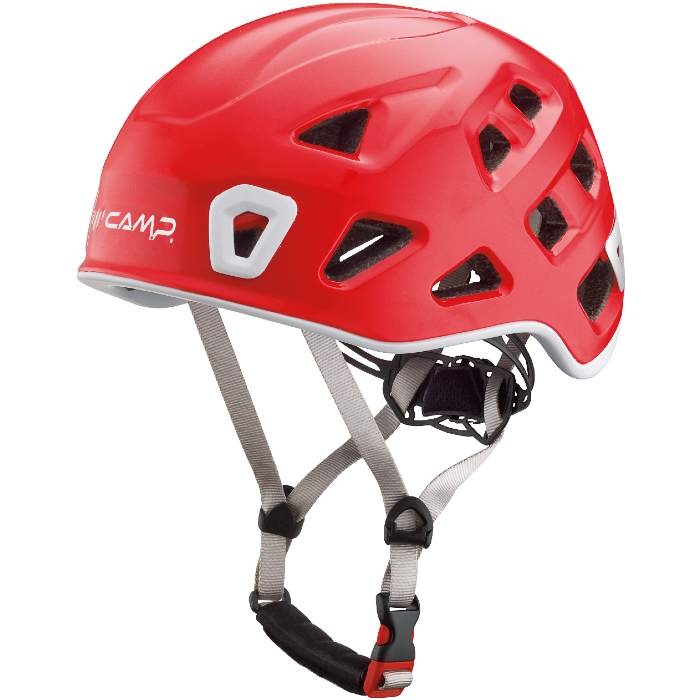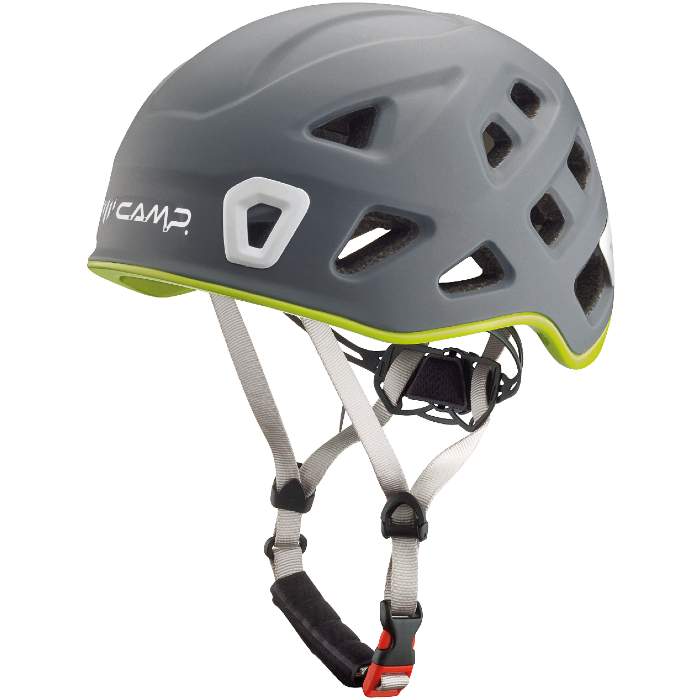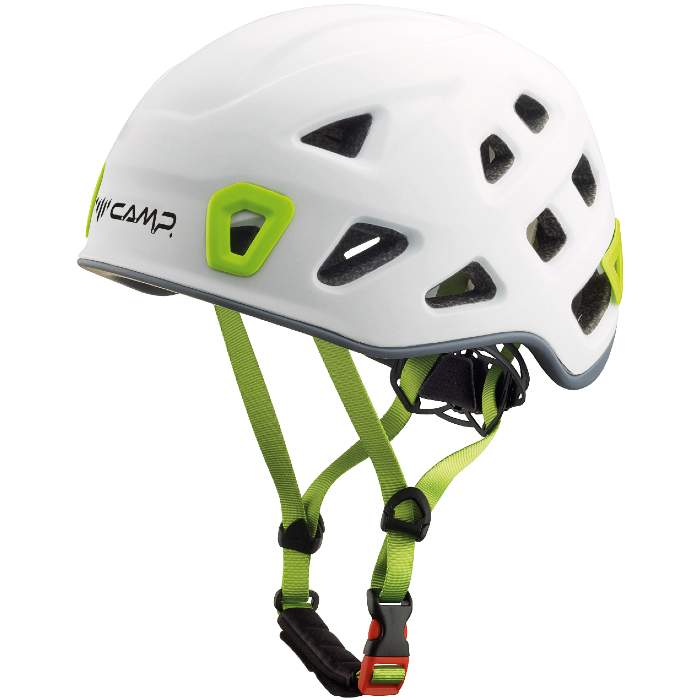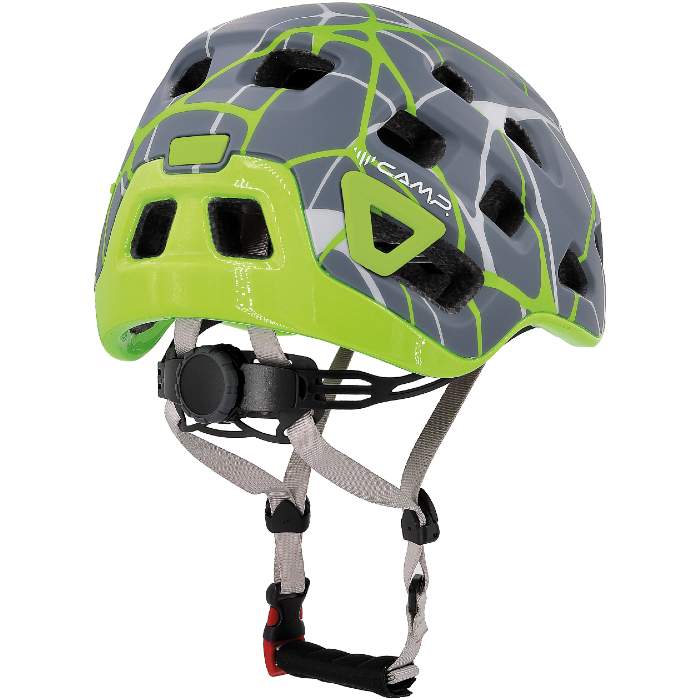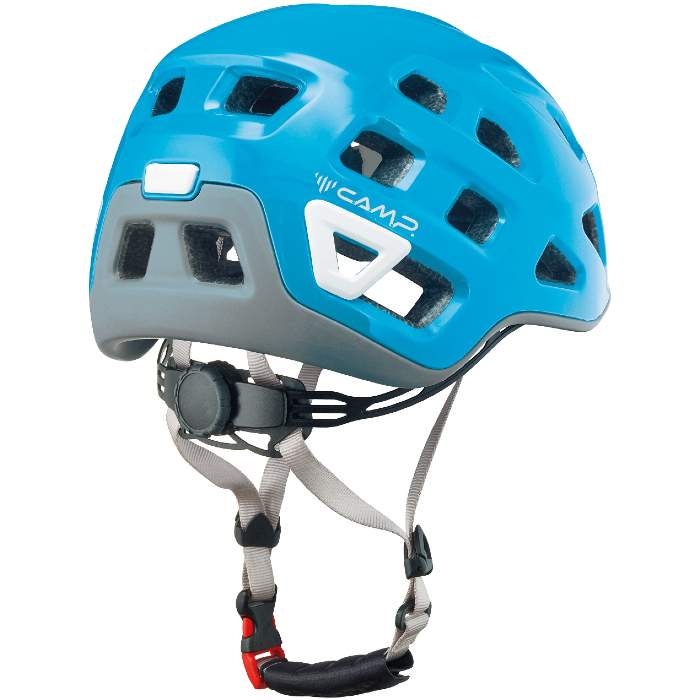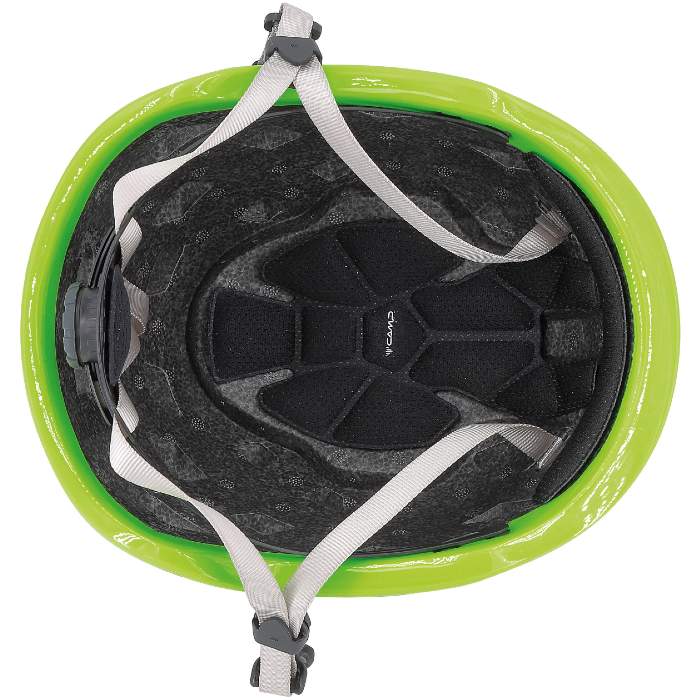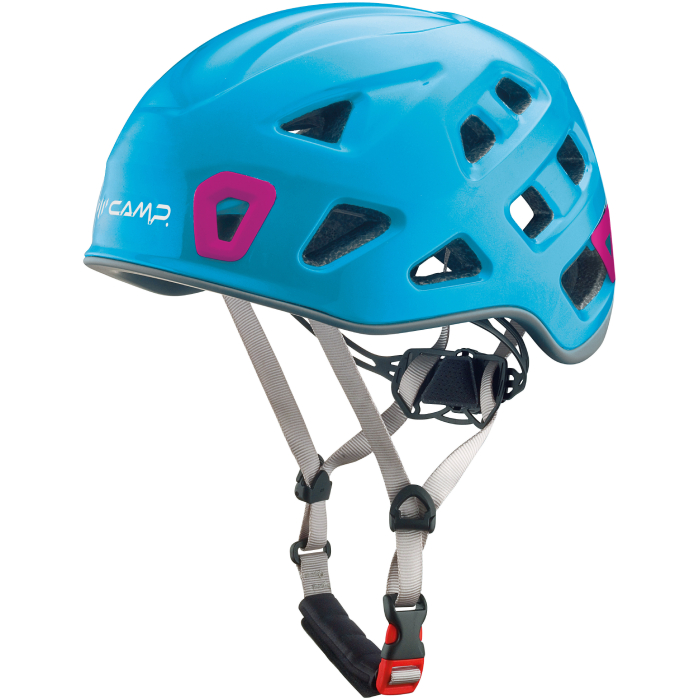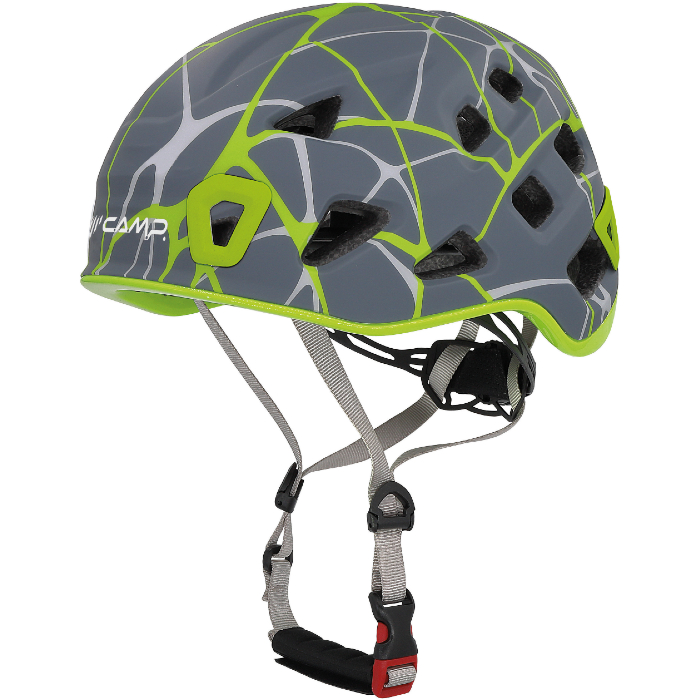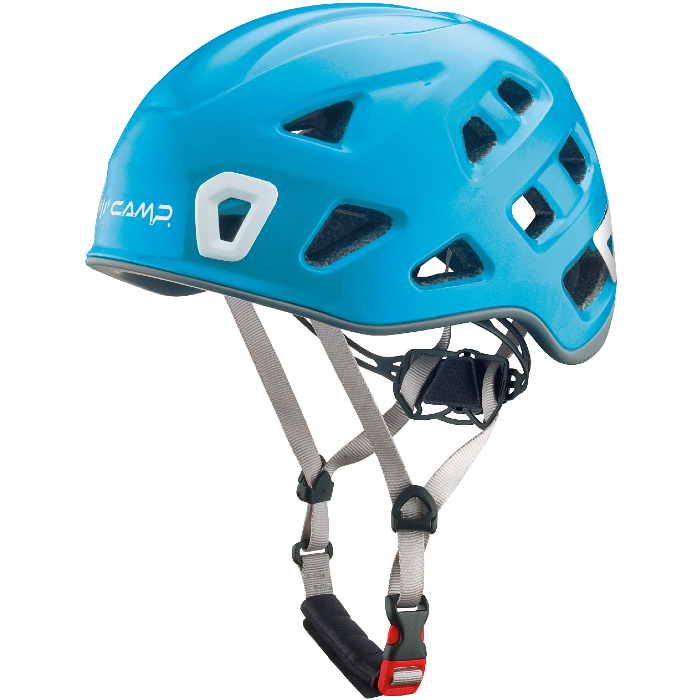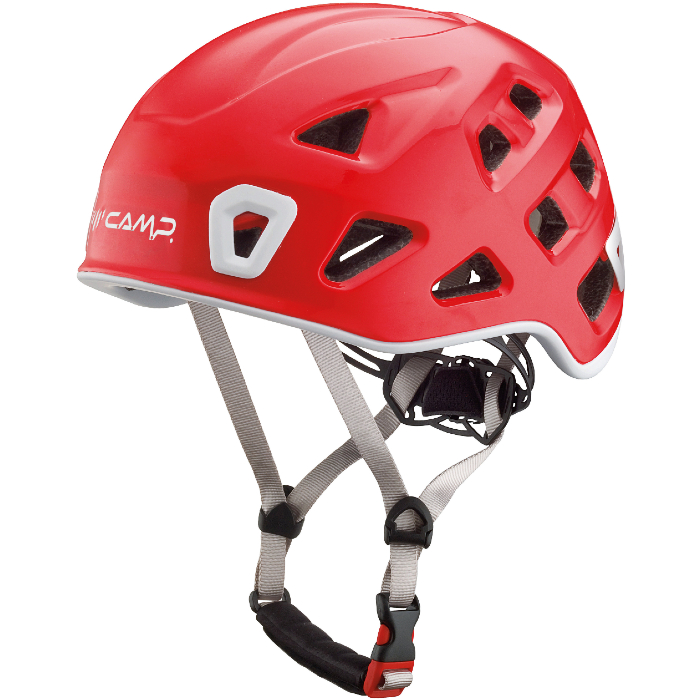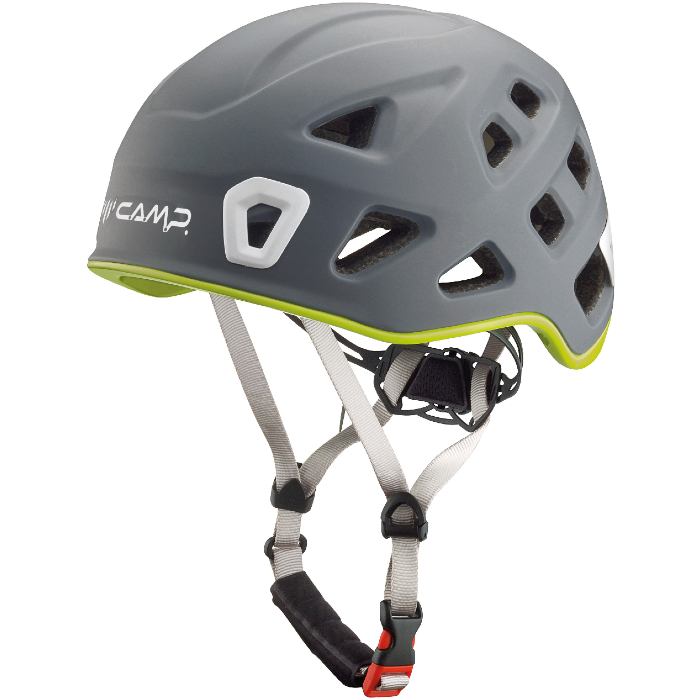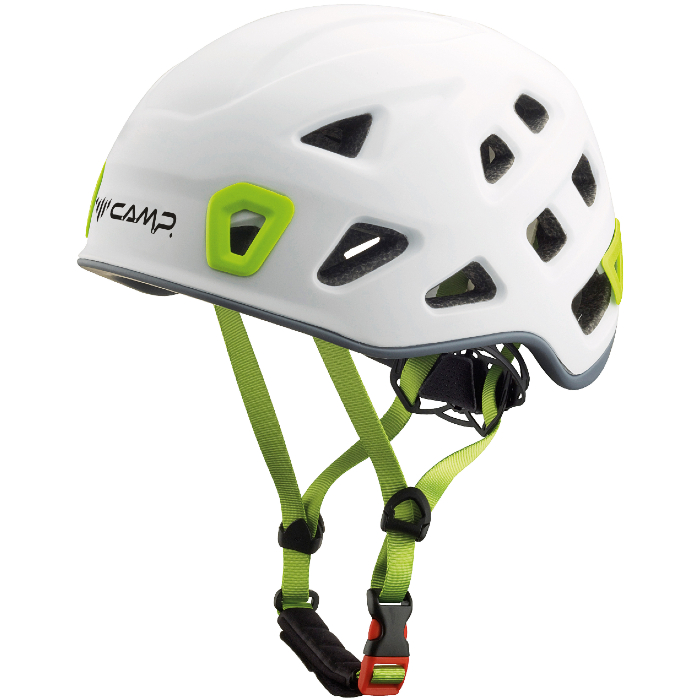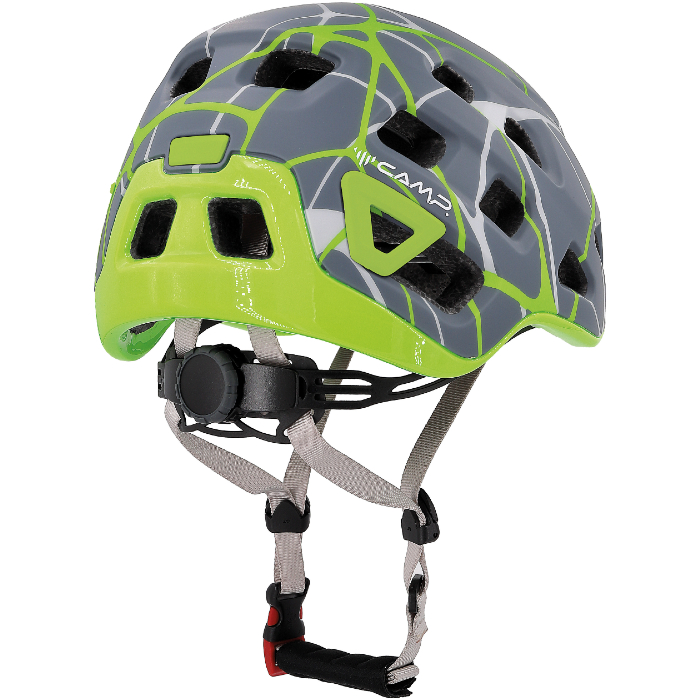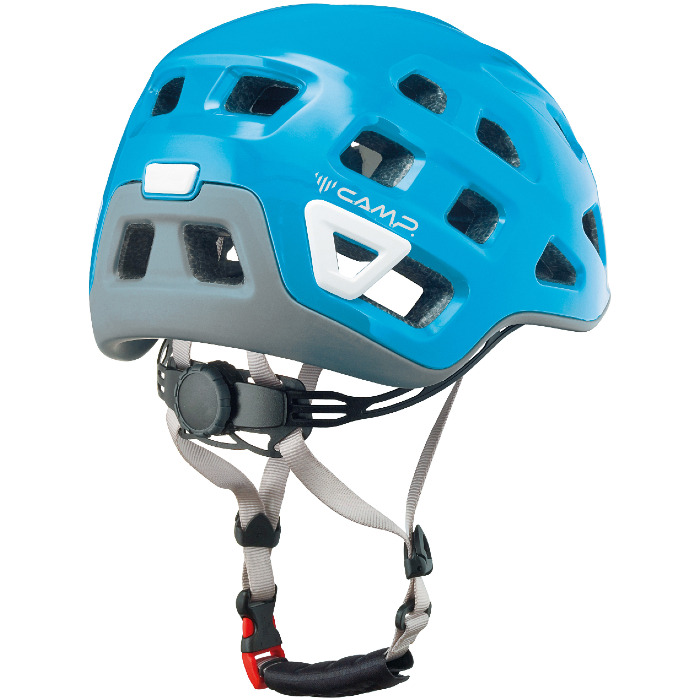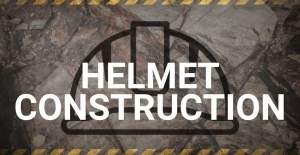Storm
Description
- Our lightest helmet designed for technical climbing and mountaineering
- In-mold EPS construction with a durable polycarbonate shell
- Open air design with 22 vent holes for remarkable breathability
- Precise fit with removable padding for exceptional comfort and safety
- Lightweight and secure dial adjustment system sits low on the head to keep the helmet in position
- Quick adjust locking buckles on both sides of the chin strap for easy and secure adjustment
The Storm is a cutting-edge helmet that provides exceptional protection and is comfortable enough to wear all day in any conditions and for any kind of climbing. 22 streamlined vents keep the head cool on multi-pitch climbs and when conditions warm up on mountaineering routes. Two sizes have been optimized for a very broad fit range and the harness and dial system cradle the head low to keep the helmet in position even with dynamic movements. Available in 2 sizes and 4 new colors.
- Our lightest helmet designed for technical climbing and mountaineering
- In-mold EPS construction with a durable polycarbonate shell
- Open air design with 22 vent holes for remarkable breathability
- Precise fit with removable padding for exceptional comfort and safety
- Lightweight and secure dial adjustment system sits low on the head to keep the helmet in position
- Quick adjust locking buckles on both sides of the chin strap for easy and secure...
Retail price
When you click a link below and then checkout online, no matter what you buy (climbing gear or not), we get a small commission that helps us keep this site up-to-date. Thanks!
Weight (g)  | 230 g Size 1: 230 g / 8.1 oz |
Gender  |
Unisex |
Size Range  | 18.90 in - 24.40 in Size 1: 48-56 cm / 18.9-22 in |
Features  |
Multiple Sizes |
Quick Adjust  |
Yes |
Vents  |
Yes |
Headlamp Compatable  |
Yes |
Face Shield Compatable  |
No |
| Certification | CE, EN, UIAA |
A pictoral representation of the UIAA-106 and EN-12492 standards for helmets.
The UIAA equipment standard provides a baseline for equipment performance in a test lab under controlled conditions on new equipment. Although these test conditions are relevant to the conditions encountered climbing, conditions encountered at the crags and the condition of the equipment are equally important. This recommendation from the UIAA member federation The British Mountaineering Council (BMC) provides vital equipment information that is NOT explicitly addressed in the standard, particularly failure modes of the equipment and recommendations for the use, inspection, maintenance, and retirement of equipment.


